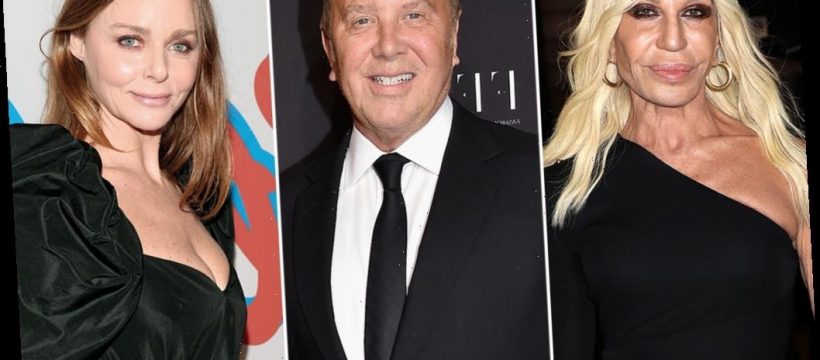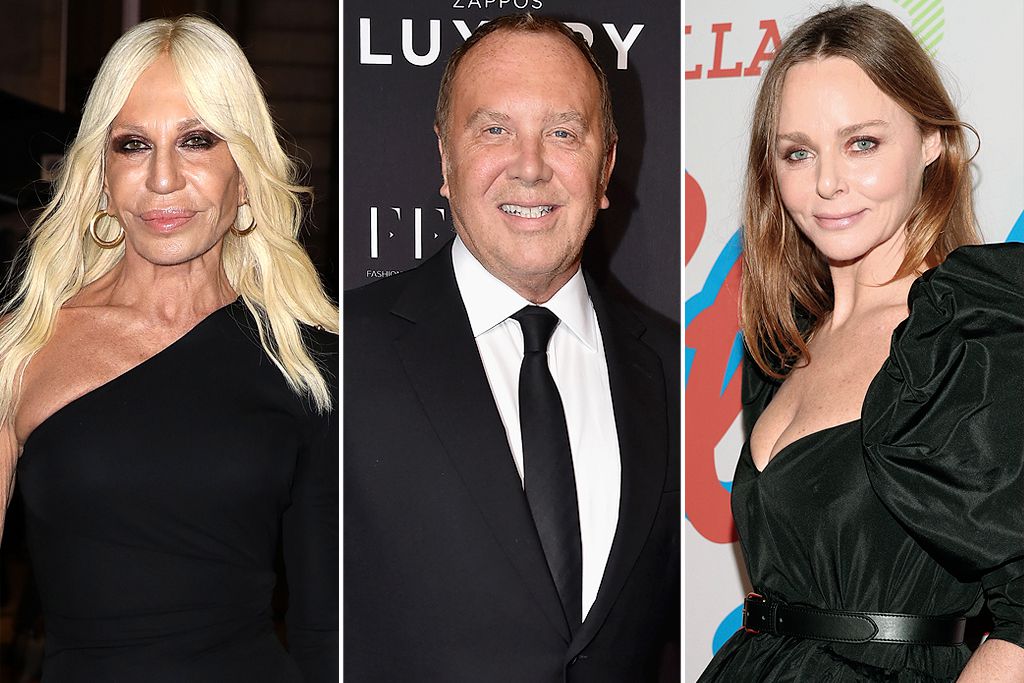The hottest trend in fashion right now is going fur-free. Versace, Michael Kors and Gucci recently made the decision to stop using fur and joined the ranks of other notable labels including Tommy Hilfiger, Stella McCartney and Giorgio Armani. And on Tuesday, one more favorite fashion destination joined in — Nordstrom.
The recent shift by so many leaders in the luxury fashion space marks a meaningful and powerful animal rights commitment from luxury brands. But the anti-fur movement is growing far beyond the list of individual brands that have made the switch, thanks to the British Fashion Council‘s decision to ban animal fur from every fashion show during London Fashion Week. The move, made in 2018, marked the BFC as the first major fashion council to ban animal fur entirely.
“Today, the British Fashion Council (BFC) announces that following a survey conducted with all London Fashion Week designers on the official catwalk and presentation schedule, no animal fur will be used at London Fashion Week September 2018,” the council announced in a press release, adding that they continue to encourage designers “to make ethical choices when it comes to their selection of materials and supply chain.”
However, the movement is proving to be increasingly widespread in the States as well. Last year, the San Francisco Board of Supervisors ruled to ban the sale of new fur pieces, making it the largest city to ever do so. According to Time, the Humane Society said this ban on selling fur marked an “historic victory” in the fight against killing animals for fur. The legislation went into effect on January 1, 2019, and will allow retailers to see their existing inventory until January 2020.
Below, we rounded up all the luxury brands that stand against the use of fur and what made them take the stance.
Nordstrom
By the end of the 2021, the nationwide department store will stop selling products with animal fur or exotic-animal skin, the company announced on September 29.
"As a leading fashion retailer, we're committed to delivering the best possible service and merchandise for our customers. Delivering on that commitment means continually listening to customer feedback and evolving our product offering to ensure we're meeting their needs," said Teri Bariquit, chief merchandising officer at Nordstrom, in a press release.
"As part of our ongoing product evolution, we've been working with the Humane Society of the United States and recently made the decision to stop offering products made with genuine fur or exotic animal skin in any of our stores or online. Our private label brands haven't used these materials for years, so extending this policy to all the brands we carry is a natural next step for our business."
Nordstrom has been committed to prioritizing the environment in other ways as well. By 2025, the company's goals include contributing $250,000 in corporate grants to slow and prevent climate change, ensuring 15% of its assortment qualify as sustainable style, reduce single-use plastic by 50% and more.
Prada
The Italian fashion house Prada Group announced that all of its brands, which includes Prada, Miu Miu, Church’s and Car Shoe, will no longer use animal fur in its designs or products. The change will go into effect in Spring/Summer 2020 women’s collections.
“The Prada Group is committed to innovation and social responsibility, and our fur-free policy — reached following a positive dialogue with the Fur Free Alliance, in particular with LAV and the Humane Society of the United States — is an extension of that engagement,” designer Miuccia Prada said in a statement. “Focusing on innovative materials will allow the company to explore new boundaries of creative design while meeting the demand for ethical products.”
Ever since the Humane Society International, the Humane Society of the United States and the Fur Free Alliance ran a public campaign urging the brand to drop fur last September, they’ve been working with Prada to help implement the changes.
Burberry
The brand announced that they’d stop using fox, mink, angora, rabbit and Asiatic raccoon fur, beginning with Tisci’s first collection. The designer, who joined Burberry as Chief Creative Officer back in March, marked the change a “new era” on Instagram.
“We’re making a firm commitment on it,” Burberry’s CEO Marco Gobbetti tells Business of Fashion. “There’s a little bit [of fur] to phase out as there is still some in the stores and we will phase it out, but it was already not a part of our creative thinking. It clarifies our position.”
Versace
“Fur? I am out of that. I don’t want to kill animals to make fashion. It doesn’t feel right,” Donatella told The Economist’s 1843 magazine. The publication pointed out that there are still fur products on the site at the time the story published (and you can still find a fur pillow right now).
And of course, PETA is praising the move. “PETA led runway disruptions, protests, and a 2006 ad blitz at a time when Versace was synonymous with fur, so this news is most welcome,” PETA’s Senior Vice President Dan Mathews said in a statement about Versace’s switch. “Donatella’s realization that it’s wrong to bludgeon and electrocute animals for fur is a major turning point in the campaign for compassionate fashion, and PETA looks forward to seeing a leather-free Versace next.”
Gucci
At the end of 2017 Gucci announced that it would go fur-free, a particular surprising move given the fact one of its most popular shoes is a fur-lined loafer.
“Do you think using furs today is still modern? I don’t think it’s still modern and that’s the reason why we decided not to do that. It’s a little bit out-dated,” chief executive and president Marco Bizzarri told BoF. “Creativity can jump in many different directions instead of using furs.”
Creative Director Alessandro Michele agreed: “Fashion has always been about trends and emotions and anticipating the wishes and desires of consumers,” he told BoF.
Michael Kors
At the end of 2017, Michael Kors announced that by the end of December 2018, all fur designs will be phased out of Michael Kors and Jimmy Choo (which it acquired last year). “Due to technological advances in fabrications, we now have the ability to create a luxe aesthetic using non-animal fur,” said designer Michael Kors in a statement obtained by BoF.
“This decision marks a new chapter as our company continues to evolve its use of innovative materials,” added Michael Kors’ chairman and chief executive, John D. Idol.
The move came after Kors experienced numerous demonstrations by PETA and animal rights activists throughout 2017 protesting his use of fur. He was ambushed on stage during a talk and PETA activists swarmed his SoHo store to protest.
Armani
Gorigio Armani made the decision to go fur-free in 2016.
“I am pleased to announce that the Armani Group has made a firm commitment to abolish the use of animal fur in its collections,” Armani said at the time. “Technological progress made over the years allows us to have valid alternatives at our disposition that render the use of cruel practices unnecessary as regards animals. Pursuing the positive process undertaken long ago, my company is now taking a major step ahead, reflecting our attention to the critical issues of protecting and caring for the environment and animals.”
The Day Gianni Versace Died: Why Did a Serial Killer Target the Fashion Icon Outside His Miami Mansion?
Tom Ford
While he’s careful not to label his brand as “fur free,” Ford noticeably left fur out of his Fall 2018 collection after recently adopting a vegan lifestyle.
“I’ve been vegan for about the last year,” he told WWD. “When you look at how most of our meat, our animal products, are raised, from a health standpoint, I didn’t feel that I should eat those things anymore.”
He told the website that he started questioning the use of fur in his collections when he went vegan. “I have started using much more fake fur. I’m not yet ready to say that I’m fur-free. Now, however, I have limited the fur in these collections and going forward to food byproducts, which does not sound very sexy. “I’m selling you a food byproduct!” That means cowhide, it means shearling, it means not doing fur that is raised purely for its pelt.”
Stella McCartney
Since the brand ‘s launch in 2001, it has never used real fur. Instead, it created “Fur-Free-Fur” that incorporates the look and feel of fur in designs but without any animal cruelty. (They notoriously have a “Fur-Free-Fur” label on the outside of clothing to make their material components known.)
In 2016 McCartney told Broadly, “I think that the fashion industry can get away with a lot and it is getting away with murder. Fur is the most unnecessary thing in the world. Those animals are not eaten, if they try to pretend that the fur industry products are by-products they are not. Those animals are bred to be turned into coats.”
To those who spoke out against the brand for even designing faux fur pieces, the brand writes on its website that “we concluded that by offering a luxury Fur-Free-Fur product that is such a good alternative to real fur we are demonstrating no animal needs to be harmed for fashion and that is an important message for us.”
Vivienne Westwood
According to PETA.org, Westwood stopped using fur in 2007 after she met with the animal rights organization and learned about the suffering of animals raised and trapped for fur.
Tommy Hilfiger, Ralph Lauren
Both Tommy Hilfiger and Polo Ralph Lauren went fur-free in 2007.
Calvin Klein
One of the very early adopters of the cause is Calvin Klein, which stopped the use of fur designs in 1994! According to the New York Times, he made his decision based on “my own reflections on the humane treatment of animals” and “the fact that the fur segment of our business simply did not fit with our corporate philosophy any longer.”
Source: Read Full Article


